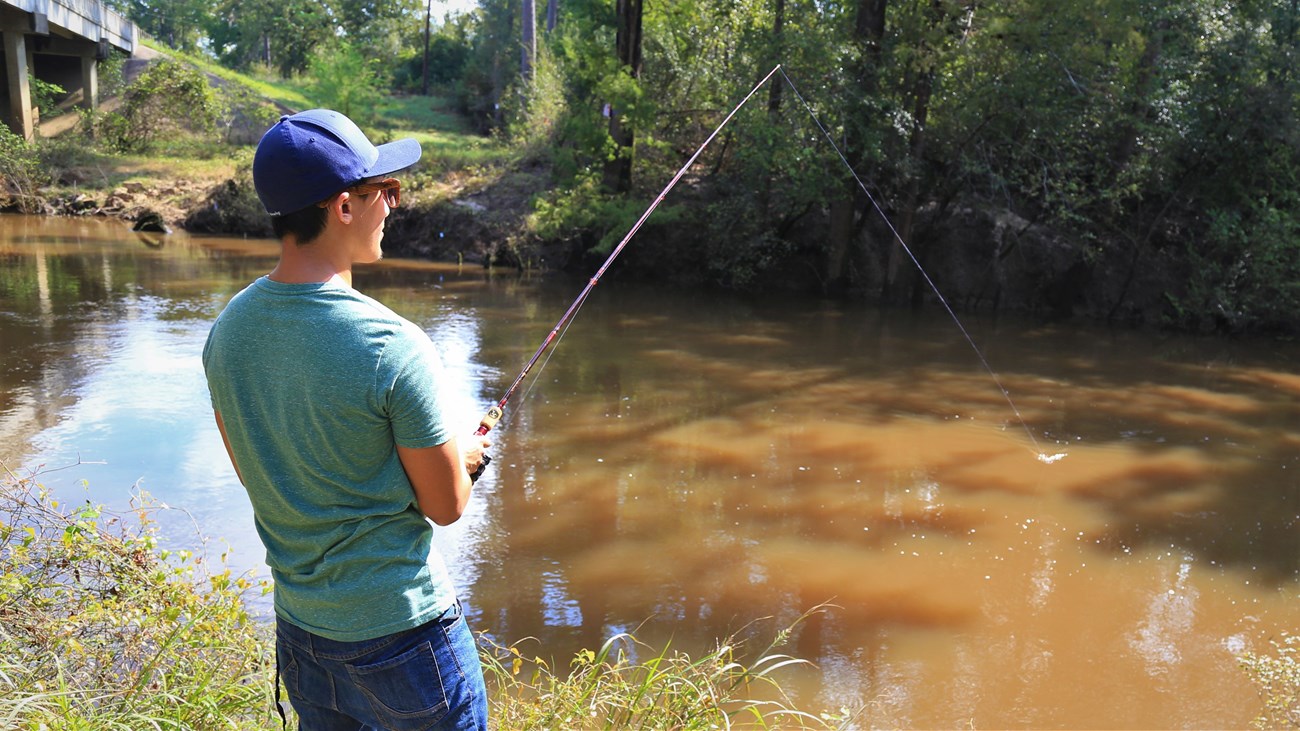
NPS Photo What comes to mind when you think about fishing? Patience, relaxation, challenge, and memories are a few words often associated with fishing. You will find all that and a sense of stewardship, conservation, and preservation on this page. We want you to have an enjoyable time during your visit, and for those who come after you to fish. Take some time to explore, learn what the park has to offer and learn your responsibilities before casting a line or flicking a fly into the water. Where to FishAll of Big Thicket's waterways, lakes, and ponds allow fishing. You'll find good fishing spots at boat launches and day-use areas in the Beaumont Unit. Recommended waterways include the Neches River, Village Creek, Turkey Creek, and Pine Island Bayou. LicensesA valid Texas fishing license is required to fish in the park although exceptions may apply, and fees vary. Children under 17 years of age do not require a license. People fishing within Big Thicket National Preserve must follow the fishing license requirements in accordance with the laws and regulations of the Texas Parks and Wildlife Department. Fishing RegulationsUnless otherwise provided for, fishing regulations apply to all finfish found in both fresh and saltwater, and mollusks and crustaceans found in saltwater (shellfish). Other taxa, including amphibians, and freshwater mollusks and crustaceans (e.g. waterdogs, crayfish) are not considered “fish” for the purpose of NPS fishing regulations and are addressed by NPS regulations governing “wildlife” (36CFR2.2). BaitfishThe possession or use of live or dead minnows or other baitfish, non-preserved fish eggs or roe is permitted in all freshwater areas of the preserve in accordance with the provisions of State law. Fish Consumption Advisories in National Park WatersThe Environmental Protection Agency, states, territories, and tribes provide advice on fish and shellfish caught in the waters in their jurisdiction to help people make informed decisions about eating fish. Advisories are recommendations to limit your consumption of, or avoid eating entirely, certain species of fish or shellfish from specific bodies of water due to chemical or biological contamination. Big Thicket National Preserve Fish Consumption AdvisoriesGet more information about fish consumption advisories from Texas Parks & Wildlife and Texas Department of State Health Services. Neches RiverDue to the presence of dioxins and unhealthy levels of mercury
Village CreekDue to unhealthy levels of mercury

NPS Photo / Mary Kay Manning Aquatic Invasive SpeciesImagine your favorite fishing spot and the wonderful memories. Things may look fine but underneath the surface there is a serious threat. Everything you remembered is now cemented together in a sharp, smelly mess. Invaders have wiped out the fish species you used to catch. How You Can Help – Stop Aquatic Hitchhikers
Visit Texas Parks & Wildlife for more information about exotic aquatic species in the state of Texas. Fishing Throughout the National Park SystemWe invite you to visit the Fish & Fishing website for more information about fish and fishing in the National Park System. You will learn about conservation, different fish species, and parks that offer fishing. |
Last updated: April 28, 2025
